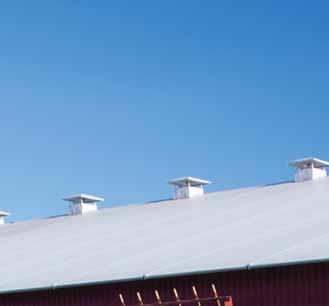
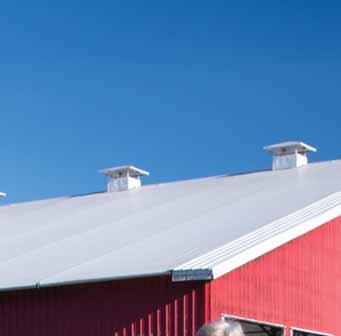





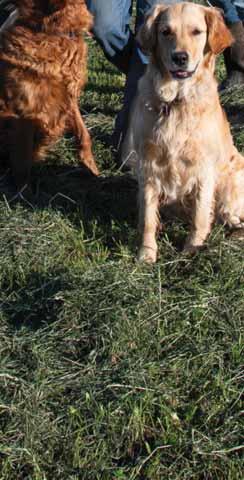












































































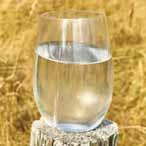



























































Letters
Sea Life Celebration
We had a lovely day for our LMS Sea Life Celebration this August 13, 2023. It was a meaningful and fun experience for many families: children, teens and adults.
The Sea Life Celebration was a happy experience for our wonderful volunteers and staff as well as for our many visitors of all ages.
Thank you to:






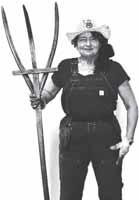


• LMS staff and volunteers who helped with planning, advertising and preparation work prior to the festival;

• those who enthusiastically shared their talents and assisted with welcoming visitors, putting life jackets on young children, diving for local sea life for our LMS touch tanks and also with the excellent Sea Aquaria touch tanks from Victoria, where marine biologists and sea life enthusiasts also shared their sea life knowledge;
• our summer staff and volunteers at the Sea Life Centre who provided hands-on sea life activities, the awesome pop-up card-making and octopus videos at the Maritime Museum, the

TAKE5 take5.ca 5
Exploring the wonders underneath our ocean at Ladysmith's Sea Life Celebration at Ladysmith Community Marina. Photo: Bob Burgess
variety of art projects, games and music under the big tent, a clown making octopus balloons for the kids, free snacks and drinks for the children, tour boat rides and golf cart rides;
• our photographer Bob Burgess who captured the excitement and activities of the day;
• friends who spontaneously helped out when they saw a need;
• our special guests and volunteers who enriched the event, creating understanding of one another through music, joyful interactions and promoting a greater respect for our sea life;
• the folks who helped with setup, cleanup, packing supplies and materials; and


• LMS staff, LMS directors and everyone who supported the event.
— Shirley Blackstaff, Sea Life Celebration committee volunteer
Cassidy Aquifer
At the Public Education Meeting on June 19, 2023, I asked a question of Schnitzer staff regarding measures taken to protect Thomas Creek, which flows, or used to, across the endangered Cassidy Aquifer. The response was derisory laughter and a profession of ignorance of its location. Below is a copy of my published poem, “The Voice of a Creek,” which I have read to Town Hall meetings and to the CVRD Directors Meeting in Duncan.
Thomas Creek cannot speak for itself, but I can.
— John Edwards
Sonnet 1199 “The Voice of a Creek”
by John Edwards
Once I was pristine
Salmon swam my creek from Oyster Bay
To spawn in Fall and the Canada geese
Marked in Spring my shining silhouette
When my pond was just north of here
Where a concrete airport runway now extends
Then someone paved paradise and built a drive-in
To indulge a Hollywood whim
Before there were bylaws
To be ignored and penned
And now instead of films
Of steel skeletons and rusted rims
There’s a pyramid worthy of an Egyptian’s tomb
And tyres that smoke in summer sun
To compliment Dunsmuir’s coal and copper waste
That yet stains my beach at the harbour’s edge
And just here where your Cedar Road crosses my soul
Out of sight and sound of your automobile
Except for a persistent tarmac hole
That betrays my presence below
Someone’s set up a helpless sign
Groundwater Protection Zone
But no one now will drink my tears
Or swim my desiccated stream to spawn
Or listen at dusk to my fading song
As I remember all of the nine thousand years
Since the last blue glacier flowed
For here, before you came, I’ve been that long
You say your money always counts for more than me
But unless you learn my true worth to see
I tell you one day soon neither of us will be
Neither of us will any longer be
Cassidy Aquifers and Schnitzer's Expansion

If you were at the Schnitzer Public Information Meeting, how many of these questions were answered by either the CVRD or Schnitzer representatives?
Background: I have some knowledge of this property and its operation, as I towed my dad’s truck to the small two-bay garage that operated on that parcel of land in 1965! I do not remember who owned the land or who was operating the business at that time.

When the zoning bylaws came into effect, NO vehicles were recycled! I would think that the operation on this property did not meet the zoning requirements and would have then been “legal, non-conforming.” It is my understanding that the operation would then be allowed to continue as it was on the date of the bylaw implementation.
This may have continued on for a few years, but then the operation ramped up to the operation that we see today! Some
6 take5.ca SEPT2023








TAKE5 take5.ca 7
years ago, a Mr. Davis purchased this parcel of land off of another Mr. Davis!
Questions for CVRD and Schnitzer:
• When was the parcel of land subdivided off for the Island Farms operation?
• Was any more land subdivided off for the current Cold Star operation?

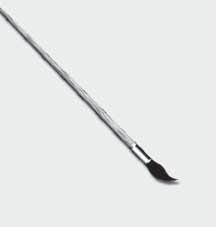
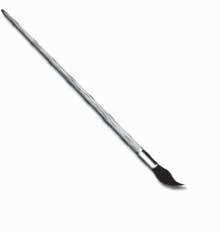
• What percentage of the original parcel size, at the time of the bylaw implementation, has been removed?


• If 20 per cent of the parcel was subdivided off, should the scope of the operation not have been scaled back by 20 per cent?
• Has Schnitzer ever had barges of crushed cars catch on fi re, on the Fraser River? If so, how many times has this happened?
• Has Schnitzer ever posted signs on their fence, at this property, regarding lead or any other type of contamination?
If so, how many times since the day they purchased this business?
• Does Schnitzer ship most of its crushed cars from a dock at Duke Point?

• Do the trucks hauling the scrap metal to barges from this operation pass by another recycling operation at Duke Point?
• It has been reported that lawyers representing the CVRD informed a judge that the CVRD can’t and/or won’t enforce their bylaws! Is this true?
• If it is true, does this statement only apply to big corporations, or rather for ALL taxpayers in the CVRD?

• Has Schnitzer ever been charged and/or convicted for any contraventions of any bylaws or laws regarding environmental issues?


• For the CVRD, why was a building that had been burnt allowed to be rebuilt when the operation was legal, non-conforming?
The Cassidy Aquifer is going to be the lifeblood of Area H as well as other communities nearby!
While the Schnitzer operation is muchneeded and recycles thousands of tonnes of metal, it must not be allowed to operate at this location. If anyone operates a business at this location, it must be at the same size as what was operational when the CVRD bylaws came into effect! —
Murray McNab
Letters to the editor do not necessarily represent the opinions or views of TAKE 5's contributors or its affiliates. editor@take5.ca

8 take5.ca SEPT2023









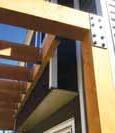

TAKE5 take5.ca 9


RDN Uses Partnerships to Keep Community Active
BY KERITH WADDINGTON
Shouts of laughter will continue to emanate from the Cedar Skate Park for at least another 10 years, thanks to the recent renewal of an agreement between the Regional District of Nanaimo (RDN) and Nanaimo Ladysmith Public Schools (NLPS).
The agreement gives the RDN permission to continue operating and maintaining the skate park — which is located on NLPS-owned land — for a fee of $1 for the duration of the agreement.
During that time, the RDN will also maintain existing park amenities, such as the gravel parking area, benches, signage and landscaping.
It’s partnerships like these that enable many recreation and parks departments to operate successfully and sustainably, says Hannah King, superintendent, Recreation Program Services, RDN.

“Whether funding partners, facility operators or program delivery partners, we couldn’t offer what we do without tremendous support from the community,” says King.
The RDN has many partnerships currently in place, including with the South
Wellington and Area Community Association, the Cedar School and Community Enhancement Society, the Cedar Community Hall and the Cedar Farmers’ Market.

“We hope over time to establish many more partners in the community,” says King.
Many people may be unaware that the RDN oversees parks and rec programming for Electoral Area A, which includes South Wellington, Cassidy, Cedar and Yellow Point.
North Oyster is part of the Cowichan Valley Regional District (Area H CVRD).
The Area A Parks, Recreation and Culture Commission serves as an advisory body to the Regional Board regarding community parks, recreation and culture. It supports groups that manage community facilities by way of grants and partnerships.
In consultation with local community organizations, the commission identified a need for a recreation coordinator to contribute to the planning and implementation of recreation and culture programs within the area. The RDN Board supported that recommendation, and in September of 2022, the delivery of direct recreation programs throughout Area A began.
The programs being offered include (but are not limited to) after-school activity programs, pickleball, babysitter’s certi fication, adult dodgeball and three weeks of summer camp. In total, there have been 220 registrations in the various programs thus far.
Morden Colliery Regional Trail is also RDN-maintained within Area A.
The importance of recreation and parks facilities, amenities and programs
are high regardless of the makeup of the community, says King. She goes on to highlight common challenges.
“As with all communities, aging infrastructure such as community halls and the inability of people to fi nd time to volunteer for community initiatives often creates a demand for recreation departments to step in and help in these areas,” she says. “The other challenge is simply awareness of the programs offered and that we are open to ideas and partnerships to meet whatever challenges the community is facing as far as providing and maintaining facilities and programs.”
12 take5.ca SEPT2023
Hannah King, superintendent, Recreation Program Services, RDN.
Photo: Kerith Waddington
For more information about recreation in the RDN, visit rdn.bc.ca/recreation or rdn.bc.ca/area-a-recreation.
LMS talks needed



It's been a great summer at Ladysmith Community Marina, said Ladysmith Maritime Society Executive Director Richard Wiefelspuett at the fi nal Dine on the Dock event for the season. All the Dine on the Docks and Music on the Docks were sold out, and, combined with three very successful festivals, harbour boat tours, and visitors to the marina, members and volunteers were kept very busy.
But with temperature cooling, concerns are growing as the non-profit society's pleas for help in facilitating talks to negotiate an agreement to continue operating the marina, with the Province, the Town of Ladysmith, and the Coast Salish Development Corp (CSDC) have yet to be heard.

The LMS is seeking an agreement that would allow them to continue operating the marina on behalf of the Coast Salish Development Corp, the economic arm of the Stz'uminus First Nation (SFN). The waterlot where Ladysmith Community Marina is located is to be transferred to SFN as part of the Reconciliation Agreement with SFN and the Province.
The lease is held by the Town of Ladysmith, who issued licence and management and operating agreements to LMS until 2029 but then served notice to LMS demanding that LMS vacate by the end of this December in order to speed up the transfer – leaving LMS out of the water.
LMS President Kelly Daniels believes an agreement between SFN and LMS is possible – if only the parties would talk to each other.
"I think people need to understand that we've been using our best efforts, even though it's been summer, to try and kickstart meetings," said Daniels. A letter to SFN council was sent a few weeks ago asking for time on their next council meeting's agenda.




In the meantime, the LMS continues to hold its weekly Talk on The Docks every Tuesday at 4 pm, to bring an increasingly nervous community up to date.
The Friends of Ladysmith Community
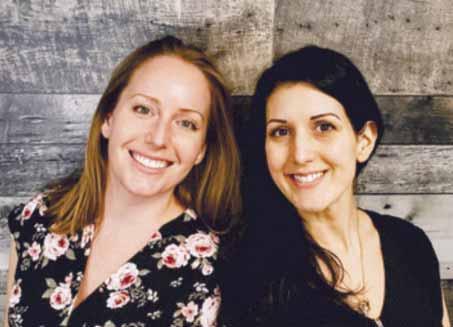



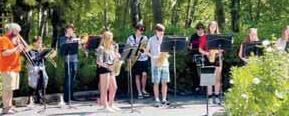
TAKE5 take5.ca 13
Marina (FLCC), a separate organization on Facebook has collected thousands of signatures on their petition asking the Province to help facilitate talks between LMS and SFN. But in a recent letter to FLCC, Simone Engels from Ministry of Forests, made it clear that the Province would not be getting involved. She wrote: "We understand that the Nation prefers to lead any communication with the town and LMS about LMS' potential future role, and we encourage LMS to continue to seek direct engagement with the Nation in this matter. Something that LMS has continued to do, said Daniels, who believes a solution can be found through open dialogue. But as of now, the question remains -come January 1, if LMS is not going to be operating the marina, who is going to be, and what are the conditions?
155th Cowichan Exhibition



The Cowichan Exhibition is celebrating its 155th year on September 15 to 17, with the theme “The Very Hungry Caterpillar,” and promises to be fun as ever. Inspired by Eric Carle’s famous book, the theme suggests a time of
growth, transformation and vibrant colours, which will be evident as you walk through the exhibits.

The mainstage will feature an exciting lineup of musical performances including Johnny Inappropriate and Eagle Eyes on Friday night, and the Steadies and Zachary Stevenson on Saturday night. The stage will also be home to talented local dance groups, ensuring there is something for everyone to enjoy.
The horse ring welcomes back the Vancouver Island Coastal Cowgirls, with their high-energy drill team performances. Joining them will be Cowgirl Chaos and Stella’s Steppers as well as American Saddlebred demonstrations from Valleyview Farms.
Head over to the barns to see the various 4-H projects and animals on display, as well as Poultry in Motion, and visit Quilts in the Barn. Other fair highlights include Craig the Magician, Yukon Dan, the Imagination Station and maze in the KidZone, the Farmers’ Market — featuring local artisans with a wide variety of products, carnival rides in the midway and, of course … food!
Head down to the lower field to hear
the roar of the engines at the ever-popular Tractor Pull and stop to take in a performance from the Company of the Blue Dragon, a heavily armoured medieval combat club using arms and armour from the 14th century.
Back for the fi rst time since 2019 will be the Logger’s Sports Competition on Saturday. Visit www.cowex.ca,
Dragon Boat Champions
BY ELLY SMITH
Long-time dragon boat paddler and coach Marnie Craig from Ladysmith is proud to show off her recent gold metal. She and her dragon boat team “Flat Out” fi nished fi rst in four out of five races to win the breast cancer survivors division and made Vancouver Island proud at the National Championships held in Ontario this summer.
Dragon boating is considered one of the world’s fastest-growing team sports, with more than 50 million participants worldwide and more than 250,000 in Western Canada alone. And Canada is a dominating force on the world stage, consistently competing with podium fi nishes.
14 take5.ca SEPT2023
Twenty-three years ago, Marnie was diagnosed with breast cancer, and through that process of healing, she and the other cancer survivors became part of an exceptional community. Marnie tells me, “Dragon boating was suggested to me by BC Dr. Don McKenzie. After conducting research, he found that

women who were breast cancer survivors needed to promote their wellbeing, stay fit and especially use their upper arms and chest muscles. By joining dragon boating, I found a very unique group of women who not only share being cancer survivors, but also a passion for staying active and whose focus is supporting one another in our community.”
In order to compete on the Vancouver Island Paddling team Flat Out, Marnie maintains a regular workout program and on-going paddling. Marnie says, “You have to earn your seat; therefore, physical training and paddling year-round are essential.”
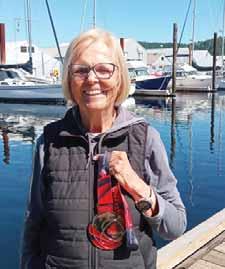
In addition to being a member of the VIP team, Marnie coaches in Ladysmith and paddles with the Nusa'Lon dragons in Nanaimo.
“There is a dragon boat level for everyone; join a recreational team. If you are into fitness, start paddling, then work on timing and strokes. Then you can participate in all levels and, most of all, have a good time. If you want to race and be competitive, you can go on to that as well; it’s not
just for breast cancer survivors.”
What’s next? The World Championships in Italy in September 2024.
National Day for Truth and Reconciliation
This September 30 is National Day for Truth and Reconciliation, a time to remember the history and legacy of the residential school system as well as honour the resilience, dignity and strength of survivors and the children who never came home.
Watch for events happening in your community on that day.
To learn more about the impact of colonization, join Quw'utsun' Elders on September 28, in the Comiaken Room at the Quw'utsun' Cultural and Conference Centre, as they take you on a journey through time with stories of pre-contact village life, the arrival of settlers, the development of colonies and policies of colonization. Elders have been sharing their stories and their healing following the values of nuts'amaat shqaluwun, people working together with one heart, mind, spirit. Register through EventBrite.

TAKE5 take5.ca 15
Dragon boat coach Marnie Craig.
Photo: Elly Smith
Nanaimo Museum exhibit “What is Sacred?”
 BY JOSH PERSSON
BY JOSH PERSSON

Feature exhibit “What is Sacred?” opened at the Nanaimo Museum on May 6, 2023. Curated by Eliot White-Hill, Kwulasultun, the exhibit explores the history and future of Coast Salish art, which is a distinct style among the art of the Indigenous Peoples of the Pacific Northwest.



What is Sacred? stem ’al u ’u’ ni x e’x e explores the past, present and future of Coast Salish art, highlighting a selection of artists from Snuneymuxw and other Nations of the Mid Island region. The historical and contemporary art in the exhibit — wool and cedar weavings,
stone sculpture, and wood carvings — reflect cultural teachings that have been passed down for thousands of years. Guests are invited to experience how the art form is now flourishing in a celebration of the richness and vitality of Coast Salish art.
Eliot White-Hill described the exhibit as “Salish people coming together to honour and acknowledge Salish art, and hold up our community and our history and share it with everybody. As the curator, seeing everybody who has been coming through and getting to learn
more about the culture and history here in Nanaimo has been really special, especially with kids and young people. Seeing them get the chance to see the traditional art here represented is a really incredible thing.”

This is White-Hill’s fi rst time curating an exhibit. “It goes beyond just making art, you know, in a sense, or making objects. It’s really about storytelling, bringing together narratives and honouring the history.”
The exhibit has been two years in the making, which began when White-Hill was doing a series of tours at the Nanaimo Art Gallery. From this connection, he met Sophia Mayer, who’s the manager. She reached out to White-Hill, wanting to work with him on an exhibit that honours Coast Salish history and helps decolonize what a museum can be. According to White-Hill, “reaching out to artists from the different communities in the Mid Island and bringing as many as I could together” was an integral part of the project.

“This is an incredible moment right now that we’re in where there’s so much more interest in learning about

16 take5.ca SEPT2023
Eliot White-Hill, Kwulasultun, curator of What's Sacred at Nanaimo Museum. Photo: Marina Sacht
Indigenous culture, where people are engaging with the work of reconciliation and understanding, which means educating ourselves about Indigenous cultures where we are. So that has driven a lot of opportunities for Indigenous artists. I think it’s important to continue creating those opportunities and to continue to create chances for Indigenous artists to share their work. The erasure and suppression of history and misrepresentation are just so much. Every chance that there is to share our art and to tell these stories can transform the way that people understand where they are and the land that they’re on,” says White-Hill.
Artists featured in the exhibit are Dr. William Good, Ay Lelum, Joel Good, Noel Brown, Richie Brown, Steph Thomas, Gina Seward-Wilson, Ryan Hughes, Jesse Recalma, Peter Seymour, LessLIE, Dylan Thomas and Luke Marston. Everyone who would like to learn more about what Nanaimo is and its history and experience all the di fferent ways that art can be looked at are invited to come and see this show and take in the culture’s depth and the people who are doing such incredible work to share it.

Local Writer Strikes Again!
BY: JOSHUA PERSSON


Jackie Elliott is a local Ladysmith writer originally from the UK. She settled on Vancouver Island in 2004. Her new book, The Vile Narrows, is the fourth in her Coffin Cove Mysteries series. The plot centers around a twisted version of Canada's Paci fic coast. Coffin Cove is a town of contradictions. It was


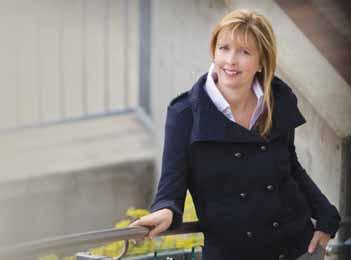
once a thriving community surrounded by spectacular nature. But the town's stunning oceanfront is marred by an ugly pulp mill and abandoned fish plant. Fiercely close-knit, kindness and community spirit are hindered by suspicion and mistrust of outsiders.
It was a culture shock for her to swap a fast-paced city life for Island living. It wasn't at all how she had expected. She was intrigued by the pioneer spirit of their small communities and the fight to hang on to traditional ways of living. "Small towns 'with a heart' have claws and teeth as well, and that makes the perfect backdrop for a good murder mystery story!" says Elliot. When she's not writing or working for Ladysmith Maritime Society, she is gardening, reading, or poking around local museums, looking for inspiration. Elliott is married to Bob, a commercial fisherman and accomplished storyteller - like most fishermen!
Elliott's books can all be found in paperback or digital format. More information about Elliott and her books can be found at www.jackieelliottwrites.com


Ballet Victoria Performs Ballet Rocks in Duncan

The Cowichan Performing Arts Centre and Ballet Victoria are proud to present Ballet Rocks on Thursday, October 5, at 7:30 p.m. in Duncan.

TAKE5 take5.ca 17
Ballet Victoria returns with a heartpounding and electrifying program that pays homage to some of the greatest rock ’n’ roll bands of our time, from Roy Orbison to Pink Floyd, Led Zeppelin, Disturbed, Sting and more. Unexpected and genre-bending, Ballet Rocks reimagines the ballet genre with a contemporary spin and high-energy passion. Founded in 2002, Ballet Victoria is a boutique professional ballet company with 12 dancers and four yearly productions. With nearly 100 new works, including 10-plus full-length ballets, and having toured all over North America, Ballet Victoria’s artistic team is constantly exploring new territory, music and genre that speaks to those who are discovering ballet and the expert aficionado. From Baroque to rock, opera and folk music, the company continues to inspire with brand new creations that make ballet accessible to all audiences. Tickets can be purchased online, by calling 250-746-CPAC (2722) or by visiting the Ticket Centre. For further show or venue information, visit the Cowichan Performing Arts Centre website at www.cowichanpac.ca.
It’s All About the Land
The west coast launch of renowned Kahnawà:ke Mohawk activist and scholar Taiaiake Alfred’s new book, It’s All About the Land, will kick off with appearances in Ladysmith, Chemainus and Nanaimo on September 26 and 27.

The book explains how racism and colonial mentalities continue to shape relationships between the Original Peoples and settlers, and why land is at the centre of it all. Local Ladysmith writer Ann Rogers, who collaborated on the project, stresses that it’s a book for everyone who is interested in Indigenous issues.
“I’m a fourth generation settler on Stz'uminus territory, and I grew up with a lot of bad ideas, so this work is very personal to me. While like a lot of non-Native people I’ve been working hard to advance Reconciliation, I had very little idea of how it looks from an Indigenous point of view. Taiaiake’s analysis turned my thinking on its head, and he is an amazing speaker, so I’m excited that people in my own community will get an opportunity to hear what he has to say.”
It’s All About the Land will be released September 12 by University of Toronto Press, and copies will be available to buy at the events.
There will be a book launch at the Ladysmith Museum on September 27, at 5 p.m., and beforehand in Chemainus, from 2 p.m. to 4 p.m., at the Salish Sea Market.

Restor-volution!
Nanaimo’s Wordstorm Society of the Arts presents Restor-volution — an open-mic celebration of peace and sustainability.
On September 23, Wordstorm will be partnering with owner of Windowseat Books, Andrée Bizier, to host a special event in Nanaimo’s Old City Quarter.
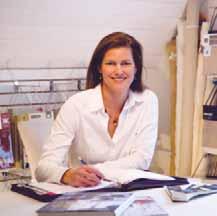
The event kicks off Wordstorm’s fall/ spring 2023–24 season of programming focused on the idea of Restor-volution. This concept, developed by Wordstorm’s artistic team, asks how can poets and writers move the conversation to explore and rethink the ways that we relate to our planet and to each other to help restore harmony, balance and equity for all species that share this world. The event will be held from 1 p.m. to 3 p.m. adjacent to Windowseat Books, located at 309 Wesley Street. Poets and writers of all genres are invited to register at wordstormsociety@gmail.com.
Why Not Join a Choir?
Fall is a great time to consider taking up a new, or lapsed, pursuit that will connect you to fellow enthusiasts and fill the darker days with creative light. Why not consider joining a community choir? The Yellow Point Singers community choir is looking for new members.
“Our choir has been building community relationships for over twenty-

18 take5.ca SEPT2023
six years since forming in 1997 as the Yellow Point Glee Club from a group of parents with kids in music programmes. With the addition of our musical director, Doug Roszmann, in 1998, we became a broad-based collection of folks from many walks of life who love singing together,” says Edie Fishlock, member for the Yellow Point Singers.
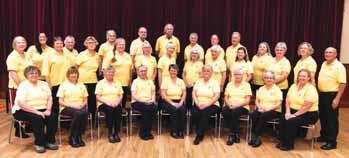

They meet each Wednesday at 7 p.m. to 9 p.m. at the Cedar Community Hall, where they learn new repertoire, practise for upcoming performances, indulge in cookie breaks and catch up with one another.





Their mixed voices, soprano, alto, tenor and bass create a rich sound that they take to fill places “such as local care homes, the Port Theatre, local choral gathering and twice-yearly concerts at our home base,” adds Edie.


Don’t read music? Been out of singing for a while? No problem. Your fellow singers are more than happy to support you as you learn or relearn this art form. Practices begin with warmups and exercises to help tune in with the best voices. They also have twice-yearly workshops to fine tune before performing. Perhaps you and a buddy would like to drop in for a sample session during the start-up month of September. There is no charge for these exploring sessions. You won’t be put on the spot for an audition either! Tenor and bass voices are particularly wanted at this time. Minimal costs apply once you’re a full member to cover purchase and storage of sheet music for the library and hall rental. The benefits of singing in a choir are numerous. Singing is great exercise for the brain and body. Creating beautiful moments together is rewarding and wonderfully uplifting. An evening listening to their accompanist, Pippa Williams, is a treat in itself.
The Port Theatre’s Silver Jubilee

The Port Theatre means a lot to our community and it took a lot of grit, determination and passion to turn the dream of building a theatre into a reality. Nanaimo is very lucky to have this gathering place in the heart of our downtown — a place for all ages to come together for music, dance, theatre, special events and graduations.
On September 13, from 7:30 p.m. to 9 p.m., join them for a wonderful night as they look back at all their special moments from the past 25 years. Enjoy live performances followed by a reception, where you’ll connect with others who care deeply about the Port Theatre. Chat with the founding members and champions of arts and culture who made all this happen, and meet the team who are taking them forward in this next exciting stage of their journey!



TAKE5 take5.ca 19
Yellow Point Singers. Photo submitted.
Farming for a Living




 BY KATE GIRARD
BY KATE GIRARD



When you look at farming in Cedar and area, it doesn’t take long to realize there are as many ways to farm as there are farmers. In fact, each farm is a world unto itself. Each has its own history, geography and lifestyle.


Take Ben Cuthbert’s dairy farm, for example. Cuthbert runs Silvermaple Holsteins on Adshead Road, along with his wife, Suzanne, and their son, Thomas, and wife, Catherine. Ben and Suzanne can chalk up fifty years as dairy farmers, each having grown up on a dairy farm on the Island. In 1988, they bought the place on Adshead, the former DeClark Dairy.
The original farm backs on to Cottonwood Golf Course and has grown from 160 to 355 acres. It’s picture perfect, with a long straight lane lined with plum trees, a welcoming white farmhouse and lush green fields. When I had arrived to meet him for an interview, Ben came out of the farmhouse to greet me, climbed into a pickup and told me, “Hop in.” We bounced along for a whirlwind tour of his world.
Cuthbert’s energy and his pride in the family farm shine through. When I asked him about the biggest challenge of farming, I was expecting an answer like the constant workload or perhaps worries about climate change. True, Suzanne and Ben work long hours, with two days off every two weeks, thanks to hired help. During the busy summer months, they’re lucky to get a day or two here and there. With the current drought, Ben checks the irrigation sys-
tem frequently. “You can’t farm without water,” he told me. The animals need it, and so do the grass and corn he grows to feed them.




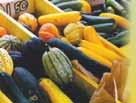


But the thing Ben Cuthbert likes least about farming? I would’ve never guessed. His answer came immediately: “Losing cows.” Of course, his answer makes perfect sense. Each one of his 300 cows is valuable, both as an animal under his care and as a producer of milk. Each is also likely to be part of a speci fic line of pedigree Holsteins, bred and developed at Silvermaple. From his office on Adshead, he’s connected to farmers around the world.
Our tour included a visit to the poultry barns, operated by their son Thomas. There, broiler chickens are raised yearround. We ended with a walk through the barn on the home farm to see the two robotic systems used to milk the cows. This farm is complex, requiring a vast array of skills, but the Cuthbert world is an orderly one. Each family member has a unique set of responsibilities to keep the farm running smoothly. It’s clear Ben pays attention to all the details,
20 take5.ca SEPT2023
Silvermaple Holsteins. Photo submitted.

from a sprinkler head gone askew to his duties with provincial and national dairy organizations.





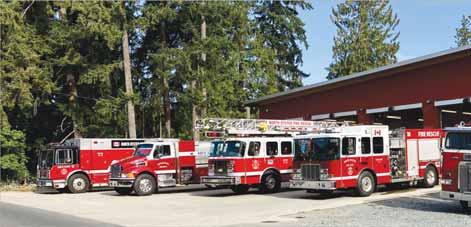
A few miles away but in a farm world of their own, the Hough family raises Aberdeen Angus cattle on the shores of Quennell Lake. Kilmarnock Farm has been in the family for over 150 years, ever since the fi rst land grants to the Bennie ancestors in 1872 and 1874. It’s a beautiful property, with extensive pastures and forests. Today, Rob Hough, his mother, Suzanne, and sister Marilee, and husband, Robert Grant, all live on the farm.
Rob Hough has farmed since he was 25 years old, beginning with sheep but then settling on Aberdeen Angus beef.
The herd ranges from 40 to 50 in size. It’s a cow-calf operation, raising calves until they’re about 500 to 600 pounds each, and then selling them to be fi nished at twice that weight.

Rob and Marilee radiate a relaxed good cheer when speaking of farm life. Rob’s favourite task is making hay. Though it’s hard work — especially since he leases 200 extra acres of hay land — he likes the sense of accomplishment in seeing the fi nished bales. His only complaint? Chasing cows when they break through fences. Marilee, retired from her career, does the books for the farm, has a large farm garden and helps out as needed.
Both Rob and Marilee expressed concerns about the future of farming in Cedar. They noted the growing population and the pressure for development. Like Cuthberts, they see the impact of the current drought. Rob mentioned another local beef farmer whose hay production dropped from a usual 2200 square bales to 480. However, Marilee and he agree the biggest deterrent to raising beef on the Island is the lack of a local abattoir.
Both Cuthberts and Houghs hope family members will continue to run their farms in the future — even though Rob observes the beef industry “seems to be all about numbers, industrial or corporate farming, rather than the family farm.” Each family takes great joy in the world of its farm and wants its way of life to continue.
No doubt about it, farming is hard work. But as Ben Cuthbert observed, “the future of agriculture gets better every time someone gets born and eats.” Cedar farmers will be there to feed them.

22 take5.ca SEPT2023
Kilmarnock Farm. Photo courtesy of Marilee Grant
(l-r) The Cuthberts, Suzanne, Connor, Ben, Erin with Mackenzie, Thomas holding heifer, Catherine holding Riley. Missing: Natalie, and Georgia. Photo submitted.
Heritage Farm Buildings Inventory
BY MARINA SACHT
A barn inventory by the North Oyster and Area Historical Society (NOAHS) Museum is being revived.
The project was started a few years ago, but COVID put it on hold. The recent destruction of Yellow Point Farm’s barn by fi re has got the project going again.
The more-than-a-century old barn was one of the best examples of a wooden barn still in use and the heart of the farm operation. A GoFundMe page has been set up, and donations can be made to the Yellow Point Farm’s Fire Relief Fund. Its loss has reinforced the need to record these beautiful buildings, according to John Bunning, NOAHS member and initiator of the project. “It was probably one of the best barns and in the best condition of all the barns we have in the area, mainly because it was on a concrete foundation and had a metal roof.”
John Bunning fi rst got the idea for a barn inventory when he saw a beautiful old barn on Gomerich Road slowly falling apart and recognized the critical role barns played in early community life.
The old wooden barns were often built with lumber cleared from the land they stood on and were sometimes constructed before the farmhouse. They were the heart and soul of a farm. Bunning recognized the need to record these buildings, as they are the legacy of the agricultural community that characterized much of eastern Vancouver Island.

Unfortunately, many barns were hastily and cheaply constructed, further hastening their decline. Many do not have a proper foundation and were built over tree stumps and log rounds with a relatively short life. As they rotted away, more tree rounds were shoved under the floor.
The roofs are another weakness, he explains. Shingles or shakes last 30 to 50 years and must be replaced. If the roof leaks, the whole structure is compromised. Most of the surviving barns and buildings have sheet metal roofs. Today, the cost of repairing these buildings is enormous, and so they are dis-
appearing, replaced by steel sheds that are utilitarian but soulless.
The barn inventory attempts to capture the barns and their stories.
“They were the centre of the farm. And in those early days, many people lived in their barns. They lived above the animals, and in the wintertime, the animals provided the central heating. It got nice and warm in there.” Bunning laughs.
Another attractive barn still standing was built by two Russian sisters. “There’s this little hammer and sickle up on the barn, so I guess in 1912 or 1915, when they built it, the full horrors of communism hadn’t been made public.” Their house is still in use today as a garden shed.
NOAH volunteers will continue to expand their barn inventory and ask owners for permission to photograph the building and its structural features and fill out a questionnaire regarding the history of the building. The location of the barn is kept private.
Once completed, the records will be available through the NOAHS Museum.
Preservation of old barns is difficult, but it does happen. A barn on Cedar Road has been put on a concrete foundation and has a metal roof. But with many of the barns over a century old now, it’s a race against time.
If you have an old barn on your property, or photos of a barn that is now gone, or even if you have noteworthy farm buildings, please email John at Jbunning@shaw.ca or call 250-9240734 or contact Irene Hawthorne at 250245-2559.

TAKE5 take5.ca 23
Michael Dairy Barn. Circa 1930
Photo: Ian Fisher
BY JOSHUA PERSSON
Roberts Street Pizza
Expanding
Everyone in Ladysmith knows Roberts Street Pizza, which has been around for over a quarter of a century in downtown Ladysmith. They offer pizza, salads, wings and have a staggering 36 pizzas on the menu currently, guaranteeing that there will be something for everyone to enjoy. Why not go with a classic, the ever-popular Hawaiian deluxe, which is consistently the most popular item on the menu? Want something new and exciting? Try the new feature — a unique pizza that changes every month and is crafted by a member of the staff
“It was time to expand after nearly 26.5 years in Ladysmith,” says Sean Fisher, owner of the beloved restaurant. Little Town Pizza approached Fisher and his wife with the potential secondary locations in Chemainus and Lake Cowichan, and they decided that now was as good a time as any to start the inevitable expansion of Ladysmith’s favourite pizza place. Now you can fi nd the same quality food in multiple locations across Vancouver Island. The new locations will also be rebranded as Robert Street Pizza, along a new menu the next few months, which will include the
chicken bites from Little Town.
Robert’s Street Pizza has a lot more than quality food. The building is 116 years old, making it a very important historical landmark for the town of Ladysmith, which has uniquely become a hub for amazing food, community support and tourism. The building was even used to film part of the Resident Alien TV show for their Season 1 fi nale, which was filmed out on the patio.
“I will always have a soft spot for Ladysmith. I’ve been here since I was 15,” says Fisher. It seems that even with the expansion, Roberts Street will always have its roots in the town of Ladysmith.
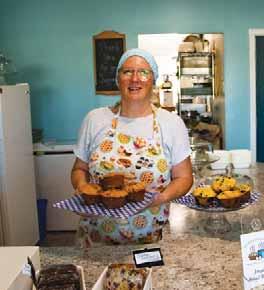
Fox & Hounds
In the near decade that the Fox and Hounds has been in Ladysmith, they have the same good clientele and consistent product. When asked what changes they have seen in the business in the last few years, Macaulay Ivens, from the Fox and Hounds, had this to say: “COVID was really hard, luckily we have a good clientele and local supporters so we managed well and did take-out. There were also difficulties with raising prices with the food prices going up.” According to Ivens, they had the addition of a new chef, Megan, during that time, and COVID helped push them to start a full in-house cooking process.
Being family-owned helps to keep that home-feeling, family-friendly environment for everyone involved.

“We are a friendly family-run place with great staff. We welcome everyone! We are accommodating, have homemade food and great local beers,” added Macauley. But it’s not just families that the Fox and Hound supports; they also help with local fundraising and charities, such as the Tour de Rock. Every year, they do a Tour de Rock burger and a portion of the proceeds are donated to the Cops for Cancer society. They have raised over $8000 from this event!
If you are looking for events at the Fox and Hound, then Wednesdays are for you, when they have live music and serve wings. On Fridays and Saturdays, they also occasionally have music, and in the winter season, they host Christmas parties. Need even more reason to visit? Try the fish and chips or the steak and mushroom pie — their most popular items (for good reason!).
Micheletti’s Kitchen
Micheletti’s Kitchen is situated right on First Avenue in Ladysmith and has a unique (and tasty) atmosphere that is adored by many in the community. The building used to be home to Rita’s Apron, in which the now-owner, Michelle Micheletti, used to work.
It was a learning experience for Micheletti, going from employee to owner. The regulars at Rita’s Apron were upset to see the beloved kitchen closing, but fortunately, Micheletti says, “past clients were happy that we were continuing the business.” The place is relatively unchanged since it transitioned into Micheletti’s Kitchen, continuing to create community-adored diner-style food.
There are advantages to owning your own place, adds Micheletti, such as making your own decisions and being able to decide your own work hours. “Being able to do things my own way.” It isn’t all perfect, though, as Micheletti and her husband are having to learn the business side of things, dealing with new backend issues and figuring out advertising.
When asked what the most popular item is, Micheletti told us that their chicken meat pies are very popular, with the soups being a close second, which is no surprise! The meat pies are deliciously packed full, and the soup-of-theday is an ever-shifting meal, so you will always get something new and unique. But what is Michelle’s personal favourite item? She loves to make (and eat!) the meat pies, and the butter chicken meat pie is her all-time favourite dish.
24 take5.ca SEPT2023
(l-r) A young customer enjoying Roberts Street Pizza. Photo submitted. Michelle Micheletti serves up food at Michelleti's Kitchen. Photo Josh Persson
What else does Micheletti's Kitchen offer? Dinners and complete meals that include all the food groups, new fruit crisps that were introduced this summer, cold soups to help stave off the heat, gluten free soups and options to custom order other gluten-free meals like lasagna, mac n’ cheese and meat pies. While they do not cater, you can custom order with five to seven days’ notice.

Michelle and her husband are new to Vancouver Island, only having been here four years, and they are very thankful for the support from the community that helps keep their small family business going.
The Stand

 BY NADINE WONG
BY NADINE WONG




Congratulations to Jessica Gunn who opened The Stand in July. Jessica thought there was a need for a cool refreshing drink other than coffee, teas and soda pop at the Cedar Farmers Market. She bought and refurbished a kiosk on wheels, put together tasty lemonade beverages using fresh squeezed fruits with an added twist of fresh herbs and The Stand was born. Her gourmet Rice Krispie Squares are a perfect sweet compliment to her beverages. Think Rice Krispie Square/Peanut Butter Cup, Toasted S’more or White Chocolate with local dehydrated strawberries.
Jessica is hoping to expand her menu to add either soups, sandwiches or other goodies. The Stand will also be available for events. For now, you can fi nd The Stand at the Cedar Farmers Market on Sundays, 10am to 2pm.

TAKE5 take5.ca 25
RDN Area A Cedar, South Wellington, Cassidy & Yellow Point
Cassidy Roads
It was Cassidy’s turn for a Ministry of Transportation and Infrastructure tour (MoTI). Let’s start by honouring that Cassidy wins the award for one of the worst roads in Area A: Graham Place! Although some may fi nd the patchwork design of filled potholes somewhat artistic, Graham Place has been identified as a paving priority for this year. Soon, it will be a plain, smooth, boring road.
Overall, Cassidy’s roads can be summarized as needing patching and brushing (removal of bramble, etc.). I shared my wish with the MoTI representative that I wanted them to have a bigger budget as many of our roads are in rough shape. Roads are a provincial responsibility, which means the provincial government determines the budget for fi xing local roads. A further challenge is that much of our region’s (MoTI) time and money was spent on fi xing the damage on Highway 4 that occurred as a result of the Cameron Lake wild fi re.
Following our tour, Carden and Cameron roads were identi fied for Mainroad to review brushing and construct temporary patches. Vowels Road and David Road will have some of their ditches brushed out and culverts inspected to address flooding concerns. (Although some of these roads are in the CVRD, we thought useful to cross regional boundaries since MoTI was in the area.) As well, the holes next to the road at the bus stop on Timberlands Road will be filled.
During this conversation, MoTI clarified who is responsible for potholes near mailboxes and bus stops. If the hole is next to the road and may undermine the road, MoTI will fi x it and it should be reported to Mainroad. Otherwise, these potholes are the responsibility of Canada Post or RDN Transit and should be reported to them.
Any potholes in roads or next to roads are fi xed by Mainroad, who learns of the


potholes when community members report the location. Please do not hesitate to call Mainroad at 1-877-215-6006 to inform them of road issues. The system works best when community members inform Mainroad of maintenance needs.
Beach Access
Did you know that Area A has 28 beach access points? (Well, kind of.) In 2014, the Parks, Recreation and Culture Commission (PRCC) produced a report describing the beach access points that can be found online by searching “RDN Area A Beach Access.” These access to water points are within the jurisdiction of MoTI, but MoTI does not manage or maintain these sites. MoTI also does not discourage public use of these access points. Only a few of these sites are developed, many are not actually passable, and a few involve signi ficant vertical drops to the beach. Use caution when exploring these sites.
I’ve been exploring these sites for future discussion at the PRCC, should the Commission or the community decide they want more beach access points. The RDN, in agreement with MoTI, developed and maintain sites at the Cedar boat ramp, on Pylades Road just to the right of Decourcy, and at the end of Driftwood Road. At the north end of Pace Road, there is an undeveloped but passable trail to the ocean. I wanted the community to be aware of these water access points to enjoy the incredible beauty of where we live.
Drinking Water and Watershed Protection (DWWP) Program

Given the length and impact of the current drought, and that many have expressed concerns about water supply, I wanted to let you know about the RDN’s Drinking Water and Watershed Protection ( DWWP) program. The DWW program monitors ground wells in aquifers throughout the RDN to observe if water levels are changing and to assess water supply. There are 63 wells across the RDN. Water levels are reported annually pre-summer to understand long-term patterns and to support preparation for summer. You can search the DWWP or
“RDN Groundwater Monitoring” if you want more information.
If you would like to talk about any of these issues or all things Area A, please call (250-268-7359) or email (jessica. stanley@rdn.bc.ca).


CVRD Area H North Oyster/ Diamond
A few announcements to start: Schnitzer’s application update: The application is expected to be on the Electoral Areas Service Committee (EASC) agenda in early October.
Director’s town hall: 6 p.m. on Thursday, October 5, 2023, at the North Oyster Community Center. Please mark your calendars.
Workshop for Cowichan Valley Agriculture and Agri-Food Sector Stakeholders: Hosted by the CVRD, the workshop will focus on how the CVRD can best support local agriculture. It will take place Tuesday, September 26, 2023, from 1 p.m. to 4 p.m., at the Cobble Hill Farmers Institute (3550 Watson Ave., Cobble Hill). RSVP planyourcowichan@cvrd.ca.

Now for the topic of this month — the quality of cell phone service in Area H. Many people have described their cell phone service as spotty at best. Dropped calls happen regularly. Barns are a great place to ensure no calls. Depending on the circumstances, the poor cell service can be, at the most, potentially life threatening and, at the least, terribly frustrating.
The evidence is clear that we are relying more on cell phones and far less on landlines. Recently the Times Colonist reported “according to Statistics Canada (2019), just over half of all BC homes had a landline, down from 72.5 per cent in 2014. Meanwhile, the percentage of homes that have a cell-phone [and often more] has increased in BC to 92.9 per cent, up from 84.5 per cent in 2010.”
Poor cell service is a common problem in Cowichan, as identi fied by the Cowichan Internet and Cellular Connectivity Strategy (https://www.planyourcowichan.ca/connect). The report
26 take5.ca SEPT2023
clearly identi fies that residents are dissatisfied with cellular coverage throughout Cowichan. The report is recommending the CVRD develops a robust cellular connectivity strategy. However, cell towers (and hence cell service) are regulated at the federal level.

The process is for the service provider to identify to the federal agency the need for a new or improved service, and then consult the community on the location of the tower. Companies make these requests when they become aware that gaps in service exist. However, a big challenge with the provision of improved services is determining the location of towers that aligns with both cell companies needs and community interests. This issue can divide communities primarily over safety concerns. No one wants a cell tower in their backyard.
While the federal government makes the fi nal decision on the location of cell towers, local government gets to assess whether the level of community consultation is su fficient. Also, local government can have bylaws that place restrictions on where cell towers can be located.
Bottom line, what local government can do to improve cell service is very limited. The best way for change is to call your cell provider to request better service.
CVRD Area G Saltair/Thetis Island
Life, Taxes and Baseball Life
I ran my fi rst marathon as a teenager. While at university, I set myself the goal of running a sub-three-hour marathon. After nine years of silent effort and challenging lessons, I fi nally broke the three-hour mark on my eleventh attempt.
Whenever I take on a new challenge, like “running” to be director, I remind myself that anything worth doing deserves commitment. Still, embracing everyday life lessons is often the fastest route to success. Writing an article for TAKE 5 every month was not part of the job description; however, enough people have suggested it’s essential. I’ll make sure you hear from me in this format.
If you still need to do so, please take a look at my 4000-word Area G Summer Update at www.jessemcclinton.com. I’ve
included relevant video clips from important moments at the Board table. Sign up for my newsletter to get all my updates.
Taxes
There are no CVRD Board meetings in August. In September, the 2024 budget discussions begin. Despite our taxes increasing by a double-digit percentage last year, Area G became the lowest tax jurisdiction in the CVRD. After an initial staff recommendation of 6 per cent (before the August break), the Board passed a mandate for staff to present a 2024 budget with an increase of 3.5 per cent (i.e., less than 2023 in flation). A few services, like Regional Recreation and the Vancouver Island Regional Library, are exempt from the mandate, likely making the initial budget slightly higher than the mandate. I will be seeking public input.
Baseball
Thank you to the Saltair Slow Pitch League for inviting me to toss the fi rst pitch at the Dave Hope Memorial year-end tournament. I’m satisfied knowing baseball players use the Saltair Centennial Ball fields as our grandparents intended. We’ll have food trucks next year to add to the atmosphere.
Community Conversation
I’m eyeing the afternoon of Sunday, September 24, for our next “Community Conversation.” There will be an exciting new format.
How to Get in Touch
I receive hundreds of emails in all my roles daily, but only a few phone calls weekly. If you have questions or feedback, please get in touch with me at 250-252-6525.

TAKE5 take5.ca 27
Back to Business
As summer winds down, our thoughts turn to school and work, which is why we are taking a look at the local business community and what's new.

Rural Advisory Program

The importance of small businesses in our region cannot be understated, which is why Community Futures Central Island has launched a program for businesses that provides free one-on-one coaching.

The Rural Advisory Program gives access to a business coach to work with you on business strategy, fi nancial management, sales, marketing, leadership, grants and more. They support smalland medium-sized businesses, social enterprises and not-for-profit organizations to address challenges and realize opportunities in our changing economy.
Simply complete the short application form to be matched with a regional business advisor. An objective, independent advisor can provide you with fresh, new perspectives, improve your general business effectiveness and expand your market reach. Boost your business and go professional.
New faces at Chamber



Roberta Bowen will take over the Ladysmith Chamber of Commerce (LCC) Executive Director role in October. Bowen is replacing Millie Stirling, who has joined LCU Insurance as a Commercial Account Executive.
“It was a tough decision,” says Sterling, who will continue as Director of the Board at the Chamber.
LCC President Cherie Mactier says that Bowen’s previous experience with Nanaimo made her an ideal candidate.
Purple Pigeon Treasures
BY JOSH PERSSON
Purple Pigeon Treasures is a curiosity shop situated on First Avenue in Ladysmith. It has been running in Ladysmith for nearly 10 years and has been in its current spot, next to the Old Town Bakery, since 2015.
April Akroyd runs the shop, along with the help of her son, Andrew. April started the store to challenge herself, to create a business out of nothing. The store is incredibly packed with antiques,
28 take5.ca SEPT2023
homemade jewellery, First Nations art and other curiosities. April makes lots of the art for the store, including jewellery and beads. She also makes more unique items like her glass balls that have sand and other beach pieces from Ladysmith, capturing a slice of Ladysmith history in a ball. Those that she does not make are sourced from local garage sales and other community opportunities in the area.
The most popular items sold in the store are the First Nations art pieces, made by multiple di fferent local First Nations artists. Other popular items include her stones and gems, and her oddities. Needless to say, the store has things for all walks of life.

“Life is all about the journey,” says April. “Travel is the most important part.” So, visit Purple Pigeon and take yourself on a journey in your local area.
Wholehealth Pharmacy


 BY ELLY SMITH
BY ELLY SMITH
When you arrive at Wholehealth Pharmacy on Gatacre Street, you feel like you are entering a spa. The setting is calm and serene, chairs are available along with refreshments. Shabnam Rana is the owner and pharmacist of Ladysmith’s new Wholehealth Pharmacy, an independent family-run pharmacy. She loves the town and the friendly people and tells me “my goal is to help the community by offering my expertise, oneon-one consultations, with quick, efficient service along with great prices and free deliveries.”
She has been a pharmacist since 1992 and has a background as a researcher in pharmaceutical chemistry and is certified as a Diabetes, Respiratory, Geriatrics, Travel health, and smoking cessation educator, and has coordinated clinical services for five retail stores.
Ladysmith Wholehealth Pharmacy has the latest version of Pharmacy software to receive faxes directly from doctors. Shabnam can see the other medications and check laboratory results. Her program is also integrated with interactions checking software, which can check interactions with prescriptions filled at another pharmacy. She gets a complete list of all medications and information on the over-the-counter medications for a thorough assessment.
Shabnam has also worked as a consultant pharmacist for assisted living and long-term care facilities. She is active in the community with local seniors' homes and does home visits to the seniors. She not only talks to her patients to solve their

medical issues but collaborates with other healthcare providers to come to the best solution for her patients.
Shabnam is a member of the Ladysmith Rotary Club and the Fraternal Order of the Eagles. Wholehealth Pharmacy are proud sponsor of the Ladysmith Resources Centre Association; Ladysmith Family and Friends; and the Boys and Girls Club of Central Vancouver Island.
Align with Jessica - Mindful Warriors
BY ELLY SMITH
It was already a sunny day outside, and when I met with Jessica Lowry for coffee, my day became even brighter. This beautiful soul is the mom of three, an Iyengar yoga teacher, actor and owner of Align with Jessica.
Through her vast studies and certi fications of Hatha and Iyengar, she uses props in class that are supportive to help her clients fi nd their best alignment, so students can access their best pose.
“If you want to feel the healing potential of yoga, the key is practice. I am here to support a creative and helpful path.”
Jessica has developed a class series for children, “Mindful Warriors.” Inspired by her Iyengar practice and her theatre background, she initiates brave spaces for students to explore movement and imagination. Classes start in September for 6to 12-year-olds at the Hive Collective in Chemainus, and on Zoom. And for the rest of us, she offers her popular ongoing series, “Yoga for Healthy Hips, Backs and Knees,” which begins September 5 at the Hive Collective.
For class information, please visit alignwithjessica.com.

TAKE5 take5.ca 29
April Akroyd inside Purple Pigeon Treasures. Photo: Josh Persson
The World of Bats
BY CATHY DENHAM



As a child, I was frightened of bats. Like others, I believed that they could get tangled in my hair or give me rabies. I’ve heard the only way to cure rabies was lots of shots directly into the stomach. It’s horrible to even imagine that.
I’ve learned to admire bats and understand the importance of protecting them and their habitats. It’s amazing to watch them flying around at night, darting through the air and eating hundreds of mosquitoes. I was excited to have the opportunity to attend a bat count.
That evening, with a chair and a bat counter, I sat with other participants and patiently waited until dark for them to emerge. When they did, they literally poured out into the night. It was incredible to watch. There were so many, it was di fficult to click fast enough especially since I was mesmerized by the colony’s population. They were a mixture of Yuma and little brown bats, I think.
Bats range in size from the tiny bumblebee bats to the large flying foxes that have a wingspan of up to six feet. There are over 1,400 known species that greatly vary in colour and appearance. In Mid Island area, there are only about 10 different species.
Being nocturnal, they are active at

night. They use a sonar system to navigate and fi nd their prey. By creating high-frequency sounds and interpreting the echoes that bounce back, they locate insects, objects and other animals with remarkable precision.
Our bats are insect eaters and consume huge numbers of mosquitos each night. Bat guano (poo) is rich in nutrients and is used as a valuable fertilizer. Indeed, bats are vital in helping to maintaining the health of our forests and other plant communities.
Bats are considered as an indicator species. Being sensitive to changes in the environment, their presence, absence and behaviour provide valuable information about the ecosystem’s health. But their recent prognosis isn’t great. Habitat loss, disturbance of roosting sites, climate change and diseases like the decimating white-nose syndrome, recently found in Grand Forks, BC, is concerning.
Bat counts are crucial to knowing more about them, and it’s great to have the chance to attend a count.
The BC government sponsors some counts that take place outside identified roosts, in abandoned houses, barns, church steeples and even occupied structures that provide a roosting and nursery for bats and their pups. Four annual counts usually take place each summer.
The little brown Myotis relies extensively on human-made structures as sites for roosting and raising offspring. Stewardship and management of bats and bat colonies and their roost sites is important for the future of bats in the province. Communities can become provincially certified as bat friendly.
These are places where their habitats are valued and protected even in the Local Area Planning process. Citizens are
engaged in educational and stewardship activities to protect bats and bat habitat. Within BC, Peachland, Delta, Richmond and Dawson Creek are such communities. Both Metchosin and Denman Island have bats living in community buildings, and they are fundraising to provide a live webcam to help the public observe their bats behaviour.
Last February, the North Oyster and Area Historical Society, in conjunction with the BC Community Bat Program, held a public meeting about bats. It was very well attended, and many participants shared their stories about living with bats on their property.

Bats often live in buildings without causing any issues to landowners, but there are important procedures and safety precautions to make sure you and the bats stay safe.
More information on living with bats: https://www.youtube.com/channel/UCGcqaQng0XFnLV0rIjzrlXw/videos.
For more information, please contact the BC Community bat program at www.bcbats.ca.
30 take5.ca SEPT2023
Brown bat. Photo submitted.
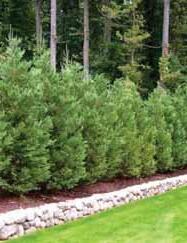







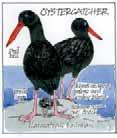






TAKE5 take5.ca 31
Cassidy Aquifers: How they work
To aid public discussion regarding concerns about risk of contamination of groundwater in the Cassidy area posed by ongoing industrial activity, TAKE 5 is presenting a two part article on the Cassidy aquifers. The fi rst part may be found in our previous issue.
 BY QUENTIN GOODBODY
BY QUENTIN GOODBODY
Cassidy Aquifers 101
All our fresh water ultimately comes from rainfall. If we do not collect rainwater directly from our roofs, we access fresh water in one of two ways:
The simplest way of getting water is by drawing or pumping it directly from a nearby lake, river, stream or spring. The Town of Ladysmith, Diamond Improvement District, Stz’uminus First Nation and Saltair all draw water from two stream-fed arti ficial lakes (reservoirs) in the hills west of Ladysmith – Holland Lake and Stocking Lake. A lot of money has recently been spent on filtration systems to ensure that the water from these reservoirs is clean enough for domestic consumption.
However, if you live in the surrounding district, chances are that you do not have a body of surface water from which you can draw, nor do you have access to a municipal water system. Instead, you have to go looking for water in the ground – in other words, you must fi nd an aquifer. When you fi nd one, you want the water you take from it to be uncontaminated so you can use it in your home: there are all sorts of protocols associated with water well completion to ensure this.
Aquifers are not underground rivers or water-filled caverns. They consist of rock or unconsolidated sediment such as gravels and sands which hold water in spaces between the mineral grains making up the rock or sediment. These often tiny spaces are collectively called Porosity, which typically makes up 10-20% of the bulk volume of a rock aquifer, but can be more than 30% in unconsolidated sediments.
Just holding the water in the pore spaces is not enough for an aquifer to be useful. The water must be able to move through the rock or sediment so we can get it out. This property is called Permeability. The degree of permeability depends on the level of connectedness between the pores in the rock or
sediment (Figure 1).

The more porosity and permeability there is, the faster water can move through the medium, and the higher the rate water can be sustainably produced from a well dug or drilled into it.


For an aquifer to provide a stable supply for water, the rate of natural fresh water recharge to the aquifer must equal or exceed the rate of water withdrawal from pumping wells. If this is not the case, the water level in the aquifer will go down and wells may become dry because they are not deep enough to encounter the modi fied (deeper) groundwater level.
Geology of the Cassidy Area Aquifers

Geology refers to the rocks and unconsolidated sediments that make up the ground we walk on.

The geology of the Cassidy area has been determined by mapping the rocks and sediments at ground surface and getting an idea of the subsurface set-up through examination of the logs of over 2000 water wells drilled in the area. Several aquifers have been recognised in the Cassidy area which are currently being used for domestic, agricultural and industrial purposes. The following description of the geology and the aquifers comes from a number of scienti fic reports that can be found online (references can be provided on request to the author).
There are two types of aquifers in the Cassidy area: 1/. Bedrock – composed of 80 million year old Cretaceous sandstones which have low to moderate porosity and permeability from which wells generally produce water at low rates. 2/. 1200014000 year old unconsolidated sands and gravels lying on top of the Cretaceous bedrock which are much more porous and permeable and from which water can be produced at higher rates.
Whereas the ground surface in the vicinity of Cassidy and The Nanaimo Airport is essentially flat today (Figure 2), geological mapping of the top of the Cretaceous bedrock reveals a valley system which was eroded into it during and just after the last glacial period about 14,000 years ago. This ‘fossil’ valley system extends from Ladysmith Harbour north toward where the Nanaimo River now flows to its estuary in Nanaimo Harbour (Figure 3).
32 take5.ca SEPT2023
Glacially fed streams filled this ‘fossil’ valley system with unconsolidated sediment. There is a distinct layering (stratigraphy, in geologic terms) to this valley fill (Figure 4). The aerial distribution of each layer (stratigraphic unit) is shown in Figure 5.

Unit 1, the oldest and deepest part of the unconsolidated valley fill, consists of densely packed sands and gravels with moderate porosity and permeability. These are distributed only locally in the deepest portion of the fossil valley and lie directly on Cretaceous bedrock.

Unit 2, distributed over the entire valley system, consists of impermeable claystones deposited some 12000 years ago when sea level was about 150 meters higher than present.






TAKE5 take5.ca 33
Unit 1, the oldest and deepest part of the unconsolidated valley fill, consists of densely packed sands and gravels with moderate porosity and permeability. These are distributed only locally in the deepest portion of the fossil valley and lie directly on Cretaceous bedrock.

Unit 2, distributed over the entire valley system, consists of impermeable claystones deposited some 12,000 years ago when sea level was about 150 metres higher than present.



Unit 3, distributed over much of the buried valley system, consists of loosely packed highly porous and permeable sands and gravels. These are exposed at ground surface except for a small area north and west of the airport.
The impermeable clay-rich Unit 4 is ground surface to a small area underneath and west of the airport. It locally forms a barrier to surface water movement into the underlying sands and gravels of Unit 3.
34 take5.ca SEPT2023
Figure 5: i-iv — Aerial distribution of units within the Cassidy fossil valley fill.
Unit 3, distributed over much of the buried valley system, consists of loosely packed highly porous and permeable sands and gravels. These are exposed at ground surface except for a small area north and west of the airport.
The impermeable clay-rich Unit 4 is ground surface to a small area underneath and west of the airport. It locally forms a barrier to surface water movement into the underlying sands and gravels of Unit 3.
Hydrogeology of the Cassidy aquifers

Hydrogeology refers to the movement of water within rocks and sediments.
The Cassidy area lies within the watershed of the Nanaimo River, which includes the Nanaimo River and its major tributaries such as Haslam Creek (Figure 6). The majority of the watershed lies within the Nanaimo Regional District (NRD); the southernmost part of the watershed, including part of the Cassidy area, lies within the Cowichan Valley Regional District (CVRD).
Analysis of groundwater levels in observation wells provides some understanding of how water flows into and out of the various geologic units.
The Cretaceous bedrock of the area is an important aquifer to those living outside of the distribution of the fossil valley-fill sediments. The BC Provincial Aquifer database recognises two bedrock aquifers, numbered 162 and 964; the boundary between the two is roughly along a line continuing northwest parallel to the north shore
of Ladysmith Harbour with 964 being west of this line and 162 east of it. Groundwater recharge for both aquifers is direct from rain, but due to the bedrock’s limited permeability and porosity it appears to be slow and care has to be taken not to over-produce from wells and running them dry. Fractures associated with faults in the bedrock appear to be an important factor in locally higher well production rates.
The water-bearing densely packed sands and gravels with moderate porosity and permeability of Valley-fill Unit 1 are numbered Aquifer 160 in the B.C. Provincial Aquifer database. There are relatively few well penetrations because it underlies a shallower good aquifer (Unit 3). Recharge occurs after a week’s lag following rainfall which indicates groundwater flows into it either from the underlying bedrock or via a slight connection to the overlying aquifer Unit 3. Aquifer 160 is termed a ‘con fi ned’ aquifer due to its not being exposed at ground surface and because it is everywhere overlain by the impermeable claystone Unit 2. Only a few wells produce from aquifer 160; their low volume of production appears to have minimal effect as observation wells appear stable over time, the most recent data reviewed being from 2016.
The clay-rich ‘tight’ (ie non porous and impermeable) Unit 2 acts as a barrier to groundwater movement between Units 1 and 3 and is scienti fically termed an ‘aquitard’.
Valley-fi ll Unit 3, numbered Aquifer 161 in the B.C. Provincial Aquifer database, is the most important aquifer in the area. Its high porosity and permeability sands and grav-

TAKE5 take5.ca 35
els provide good well flow rates. This aquifer is termed ‘uncon fi ned’ due to its being exposed at the ground surface. While groundwater recharge is mainly direct from rainfall in the watershed, local recharge from streams has prompted its division into two connected aquifers (Figure 5iii) –Cassidy Aquifer 1 to the south which is locally recharged by Haslam Creek, and Cassidy Aquifer 2 in the north which is strongly in fluenced by the Nanaimo River. The strong recharge in the north from the Nanaimo River facilitates bulk water extraction for industrial purposes by Harmac. Data suggests that groundwater pumping signi ficantly a ffects water levels in Aquifer 161. Proximity to recharge sources, such as the Nanaimo River, locally allows for a stable high rate extraction, but more work with up to date information for the southern Cassidy Aquifer 1 (most recent data seen by the author dates from 2016) is required for determination of how much water can be taken from this aquifer without long term decline in groundwater water levels occurring.










36 take5.ca SEPT2023
Except where locally overlain by the impermeable clay-rich Unit 4, the sands and gravels of Unit 3/Aquifer 161 are exposed at ground surface beneath a variable soil cover.
The regional map of groundwater elevations in wells in Aquifer 161 (Figure 7) indicates that, on average, groundwater flows from the uplands west of Cassidy and diverges from the central Cassidy area, northeastward towards the Nanaimo River and estuary, and southeastward toward Ladysmith Harbour. However, this regional picture may be locally modi fied by production from water wells - as extraction of water from a well reduces the pressure around that wellbore and prompts groundwater movement toward it. This can cause local ground water movement against the regional flow.
More detailed analysis of many wells in the area is required to determine whether this aquifer is being over-taxed by the current level of withdrawal from wells or not, and how surface contamination might travel within the aquifer.
Aquifer Vulnerability and Industrial Activity

Increased land development pressures in the early 2000s, coupled with industrial and agricultural land use activities that were considered to potentially threaten the quality of ground and surface water, prompted the CVRD to participate in a multi-year study which focussed on assessing the relative vulnerability of groundwater resources to surface contamination on Vancouver Island. This study was conducted jointly by the BC Ministry of Environment, Vancouver Island University, Natural Resources Canada, The Vancouver Island Health Authority and the Regional Districts on Vancouver Island. A rating system, called by the acronym ‘DRASTIC’ (relating to seven signi ficant factors taken into account) was devised; each recognised aquifer was assigned a vulnerability rating of either Low, Moderate or High. A vulnerability map for surface aquifers on Vancouver Island was produced that shows high vulnerability in the Cassidy area (Figure 8).
Of the Cassidy area aquifers:
Cretaceous bedrock aquifer 162 which outcrops over a wide area was consid-
ered of High Vulnerability to surface contamination entering via exposed high permeability fractures.
Although also recognised as possessing highly permeable fractured zones, Bedrock Aquifer 964 was rated of Moderate Vulnerability as it only locally outcrops at surface.
The unconsolidated con fi ned Aquifer 160 (valley-fill Unit 1) is considered to have Low Vulnerability to contamination from surface sources as it does not outcrop at surface and is everywhere overlain by the aquitard Unit 2.
Aquifer 161 (valley-fill Unit 3), the porous and permeable sands and gravels of which are at ground surface over much of the Cassidy area, is considered of High Vulnerability to surface contamination.
The quoted vulnerability study also provided an example of appropriate hydrogeological assessment for development permit applications situated on various aquifer types. If Schnitzer’s Cassidy activities, which are located on top of High Vulnerability Aquifer 161, are considered as a commercial ‘junk yard’ and of moderate hazard for surface contamination, the following were deemed required for assessment of an application to conduct these activities at that location:
• a detailed groundwater site investigation including an ongoing monitoring program
• speci fics of the potential contaminants (toxicity, quantity, transport behaviour),
• details on the protection design factors (natural attenuation, physical barriers, etc.)
• A detailed emergency response plan
• An assessment of the fi nancial capacity of the responsible party to enact the plan.
However, if Schnitzer’s activities are considered as an industrial activity posing a high risk of surface contamination to the aquifer, the possibility of complete prohibition of those activities is cited.
What the Neighbours Think
The southern portion of Aquifer 161 straddles the boundary between the regional districts of Nanaimo and the Cowichan Valley, with Schnitzer’s activities being located immediately adjacent to the boundary on the CVRD side. Given the high permeability of Aquifer 161 and its deemed High Vulnerability to surface contaminants, it seems reasonable to assume that the Regional District of Nanaimo (RDN) is interested in what the CVRD decides regarding Schnitzer’s rezoning application. ‘Actions and Best Practices’ cited from a 2010 RDN “Groundwater Assessment and Vulnerability Study” by GW Solutions Inc. indicates that industrial activities in a high vulnerability aquifer zone are not recommended and that auto-wreck yards are not allowed in such zones.
Thank you to Dr. Quentin Goodbody for this explanation of how aquifers work. We hope this has given our readers insight into the Cassidy aquifers.
Please visit ladysmithhistoricalsociety.ca for an online version of this article with full references.
TAKE5 take5.ca 37


Tannin Management


Maybe it’s just me getting old, but I’m fi nding many high-priced Okanagan Merlots, Cabernets and Bordeaux blends downright harsh. For some reason, the wineries seem obsessed with making big wines rather than drinkable ones. These wines are called “highly extracted.” What they’re trying to extract, I’m not sure, but I think it’s my teeth. (Before I get myself in any more trouble, which is coming up later, keep in mind that the overall quality of Okanagan wines is excellent.)
The back label gives these wines away. If they speak of massive structure, robust tannins, lively acidity, intense fla-
vors, or being built for the long haul, be prepared to have your mouth cauterized. If they mention best in 4 to 5 years, or that decanting twice is a good idea, you might think about picking up a bottle of Buckley’s cough medicine instead - it’ll go down easier.
A wine needs structure to age. And winemakers want their wine to age so they can sit back and talk about it, like long-winded sports announcers, for the next 25 years, as they wait for the acid to drop out and the tannins to be tamed (Sit tannin, sit. Good boy!) Then, and only then, if you’re still alive, drink the stu ff If not, use it as an embalming fluid. Well, some of us are running out of life expectancy and don’t have the time to wait. Why can’t they leave all that distasteful stu ff out, and make something we can drink now? If we want something built for the long haul, we’ll buy a Dodge truck.
But you can’t accuse these wineries of a lack of seriousness: their tasting rooms have the gravitas of your cardiologist’s waiting room, without the Good Housekeeping magazines. Just look behind the tasting bar at the portrait of Bob and



Shirley, the loving owners, who brought their great vision and sense of purpose, along with bags of carefully laundered cash, all the way from the coast to this little patch of dirt in the middle of nowhere to realize their dream.

Bob - just look at that smile - hasn’t been this happy since he got his driver’s license. That’s because he’s discovered the key to the universe - primary fermentation. He now belongs to an elite cadre of men who manufacture intoxicants for a living. Next to owning an original Hemi-Powered Dodge, this is as good as it gets.
Meanwhile, Shirley, a city gal hiding behind a disingenuous smile, keeps reminding herself unsuccessfully that the arid Okanagan is more fun than being waterboarded in a Guantanamo Bay internment camp. Playing second fiddle to a bunch of grapes is part of the problem. Everything the grapes want, the grapes get. Yet, if Shirley wants curtains for the house because the field workers are beginning to laugh at seeing Bob naked every morning, especially now that he’s put on a few pounds, she must beg. She secretly prays for flood, fi re, hurricane,
40 take5.ca SEPT2023
marching ants, wayward elk, whatever it takes to destroy the winery so they can return to the coast where it’s possible to have a front yard without a tractor parked in it.
Note to all winemakers getting ready to hop on their tractors, run me down, and spread the remains under the Müller-Thurgau vines: go to your tasting room and watch for certain tells. Are the tasters wincing between sips? Do their eyes secrete tears? Are they just a little too eager to reach the spit bucket? Are you hearing, “Yeah, it’s, uh, nice. Great with a big steak. Say, you wouldn’t happen to have any milk, would you?”
If the King is as naked as I say he is, if these Bordeaux-style wines are as undrinkable as I’m leading you to believe, why don’t we hear more about it? Because we’ve been bamboozled by the French is how come. Unknown to the uninitiated public, French wine consultants – we’ll call them Pierre & Associates - have secretly been driving their Renaults from Okanagan winery to Okanagan winery, dispensing advice on making wine, and how to market it.
The French gained their foothold in the Okanagan with a winery we’ll call “Chateau Escargot” because, when you know only a little French, your choice of aliases is limited. A joint venture between the French and Canadians, Escargot’s purpose was to create a world-class Canadian wine from classic Bordeaux varietals. Escargot blared their horns and ignited fi reworks - the French were coming to town, and they would show us how to make good wine.
Finally, the much-ballyhooed fi rst vintage was ready, corks were popped, glasses poured, and the wine…well, let’s just say it lived up to its name: hard as nails and smelly around the edges. Pierre responded quickly, and with great con fidence: “Zee strukzair es magni ficou, nest paw?” (French 10 only takes you so far.)
Three years later - a long time to wait under the MüllerThurgau - I tried the wine again. Same result. Once again, the French responded cleverly, affecting fake horror: “You didn’t open it?! You imbecile! It’s just a puppy!”
Fast forward to 2015, and the wine is still … challenging. And its defenders, those who bought heavily, are still sticking with Pierre’s story that it’s too soon to pull corks. As the French will tell you in private, selling the wine is easy; convincing people not to open it is where their mastery shines. That’s why Bordeaux dating back to the 1800s remains unopened, and why it doesn’t matter if the wine tastes like Buckley’s. It also gives Shirley plenty of time to divorce Bob, sell the winery, and move back to the coast where she can live dust free, with

curtains, and without a tractor in her yard.
Meanwhile, Chateau Escargot still makes challenging wines, which they advise one to put away… as far as possible. If you end up with a nasty, hard-drinking, massively structured wine on your table and a sip leaves your teeth rattling like castanets, grab a cheap, easy-drinking red and blend it in. We call this remedy “Tannin Management.” .
Wine Pick -Heros from the ashes
Our wine pick this month is not a wine but a region. The Okanagan wineries have been hit hard this year, says Adriane Polo of Carefree Wine Tours in Kelowna .
A lot of wineries provided shelter, meals, and a sanctuary to the people if they themselves were not in danger during the wild fi res. Some wineries are waiving tasting fees or donating part proceeds to those in need,” says Polo. That is admirable considering they themselves need help: harsh winter that passed, the loss of crop and now with the fi res, closures and loss of patrons. As a tour operator in the Okanagan, Polo has seen many hardships, but none as hard as this year. We are doing what we can to bring more awareness to our amazing product and to share our wines with our visitors. “Our wines are rich; full of bright, crisp, fruit-forward flavor that keeps your toes curled. Our wine tourism will rebound, and it will be even better, bigger and bolder.”
Pick up a copy of Slightly Corked at the Mahle House, CoCo Cafe, or the TAKE 5 office.

TAKE5 take5.ca 41
FOR SALE FOR SALE
FISH FISH FISH. Buy direct from the guy who caught it! High-quality salmon, lingcod, rock fish. All fish blast frozen at sea. Satisfaction guaranteed! Contact Jim at oceandancer. wallace@gmail.com or 250-245-5957/250-7391123.
TOP-LOADING WATER COOLER with room temperature and ice-water levers. Older model, clean, white in colour, great working condition. Includes refillable jug. Asking $50. Call 250-2457455; will return messages.
KIRBY G5 & HERITAGE II LEGEND VACUUMS with all parts/accessories. G5 works great, used half-dozen times. Plus additional parts. $200 or best offer. Call 250-245-7455; will return messages.
FURNITURE. Maple chair/cushions, maple couch frame/no cushions, small square maple dining table with leafs on ends, all orange stain, great condition. Vintage floor lamp. Best offers. Call 250-245-7455; will return messages.
BEDROOM FURNITURE. Large dresser/mirror, $300; small dresser/mirror, $200; two single metal-frame beds/headboards, $100 each; two chairs, nightstand & double-bedframe – offers. Call 250-245-7455; will return messages.
RENTALS
450 sq ft garage available for rent in Ladysmith Sept 1. Ideal for boat, rv, storage. 33ft deep X 15ft wide, 11 ft high door opening. Call/text 250-8165145 for viewing. $400/mo
GARAGE SALE
GARAGE SALE - A collection of household treasures! Saturday, Sept 9, Hardwick Hall, First United Church, 232 High St, Ladysmith, 9am to 12pm.
HEALTH & WELLNESS
TAI CHI for mental & physical health. Beginner class Monday mornings. Ongoing class every Wednesday morning. For class time and location and more information, visit www.taichinanaimo. org or call Sara 250-245-1466.
AQUA FIT. Private Aqua fit classes are available in your pool for yourself or add in some friends. Any level is offered. For more information, ellybythesea@gmail.com.
TAKE 5 ADS WORK! 250-245-7015.


FARM FRESH
EMPRESS ACRES LITTLE FARM STORE. Pasture-raised: pork sides pre-order for early or mid-Sept; variety pork packs, BBQ pork packs, pre-order Thanksgiving turkey, specialty sausages, eggs, vegetables, flowers & more; open 7 days/wk; 2974 Haslam Rd.; www.empressacres.ca. For pork sides pre-orders & boxes, email marlene@ empressacres.ca or call/text Marlene at 250-889-1343.
ACTIVITIES
CRAFT FAIR. Every Sunday Carol’s Artisans: wood turned pens, quilting, woodworking, amazing sewing and knitting, interchangeable jewellery, hats, pottery, preserves, jams and MORE. 13467 Cedar Road, 10am–3pm. New vendors welcome. Contact: petespensandmore@shaw.ca.
DO YOU LIKE TO SING? Yellow Point Singers, a non-auditioning community choir that meets in Cedar, is seeking new members. FMI: daphest@shaw.ca.
HOME & GARDEN
PAINTER. Certified Journeyman. Clean, efficient, respectful, punctual. 25+ years’ experience. WCB coverage. Enhance your enjoyment of the home you love. Call Howard 250-245-2751.
ISLAND PRUNING. Professional tree care from large scale orchards to budding new trees. I can meet any pruning need. Shrubs, vines and ornamental. Large & small clean ups. Call Darcy Belcourt 250-323-1260
KB HANDYMAN AND YARD WORKS. Minor carpentry work, decks, fences, power washing, tree pruning, yard clean up, lawn fertilizing, mowing. Seniors’ discount. Contact Karl kbhandymanandyardworks@ gmail.com or 250-714-2738.
HEART LAKE ROOFING for all your roofing repairs 250-668-9195.
ALL ACRES providing all aspects of tree work. Pruning, falling, hedging, dangerous tree removal. Fully insured. Professional work at reasonable rates. Call 250-246-1265.
MAKE IT NICE qualified, experienced, gardening and small fruit tree pruning. Available for private, residential gardens. Please call 250-754-9346.
CONCRETE RESULTS. Foundations, retaining walls, patios, driveways, walks and stairs. Full forming and finishing. 40 years’ experience. Email Gord at concreteresults@ live.com.
BUSINESS
I CAN EDIT. Copy editing, proofreading, structural editing and more. Fiction or non fiction, web content and eBook prep. For more information, editican@gmail.com.
VIDEO PRODUCTION to help your business grow. We can help you make your presence on YouTube grow. Affordable and professional service. editor@take5.ca

WHAT'S HAPPENING
Wednesdays – Ladysmith Royal Canadian Legion darts night ate, www.rcl171.ca
Thursdays – 6:45pm to 8:30pm Mid Island Dance Temple at the Cedar Community Hall: cedarmathias@gmail.com
Sept 21-22 – Creative Kids Art Program. 444 Parkhill Terrace: ladysmitharts.ca
September 23 Rotary 3rd Annual Charity Golf Tournament Mount Brenton Golf Course: (250)327-2402
42 take5.ca SEPT2023





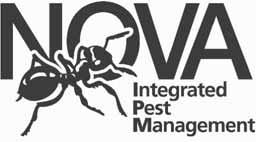











Community in Bloom fading
Twenty years ago, this September, the residents of Ladysmith were justi fiably pu ffed up with community pride. Why? The town had just been awarded fi rst prize in the National “Community in Bloom” competition for communities between 5,001 and 10,000, with a special mention for heritage conservation. This was a real honour.
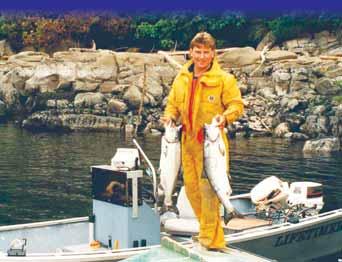

The judges, one from California and the other from Winnipeg, judged eight communities across Canada in our category and ended up awarding Ladysmith the maximum of five blooms and fi rst place. They were especially impressed
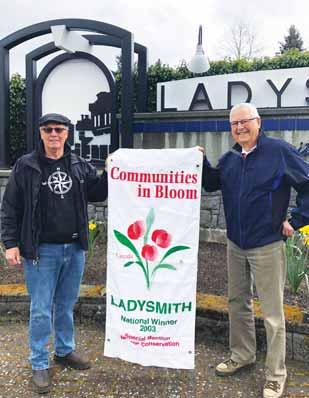
with the town’s natural beauty and architectural heritage. What had a major impact on them was all the work both the citizens and the management of the town did to beautify the Ladysmith.
Credit was given for the use of Ladysmith’s drip system to water the hanging baskets as a means of reducing water consumption and the non-use of pesticides in parks and other public areas, as well as many more progressive ideas.


How would they react today if they came back? They would fi nd that the hardworking committee under the co-chairmanship of Vincent Devries and Tim Richards had been disbanded shortly thereafter the award was presented. One reason for the lack of support was that they were not eligible for the next year’s nationals. Rather, we would have had to enter the competition at the international level. As a result, the strong level of support from the community and especially the Town waned, and died.
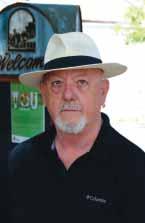
44 take5.ca SEPT2023
Tim Richardson and Vince Devries
Photo: Rob Johnson
Today, some Town staff and citizens would like to see a renewed effort to enhance the beauty of Ladysmith, especially along First Avenue. Presently, some of the planters are plant-less, with no colour, while others are overgrown with shrubbery that no longer looks as nice as it should. Yet other areas in town are planted with beautiful annuals during the summer and then left plant-less for the rest of the year.
Earlier this year, Town staff proposed that the planters along First Avenue be planted with native plants that would be drought tolerant. This, in my opinion, would be a signi ficant improvement from the patchwork plantings we now have. At the March 21 meeting of Council, staff ’s recommendation relating to the planters were rejected. Instead, Council opted to “direct staff to continue with status quo planting on First Ave.” I feel that this was a missed opportunity to help beautify our town.


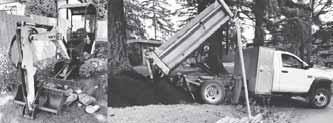
Let see what the Town can do to reinvigorate the pride we all shared in the recognition of winning the National “Community in Blooms” award as Best in Canada. We have a beautiful community, as noted recently in a feature of the best places on the Island, but think about how great we could be?





A lot of people underestimate what we have here in our community. We have a beautiful harbour, swimming areas, beaches, hiking trails and a downtown steeped in history, which is often used in movies and television due to its classic look. Each year, thousands of people from not only the Island, but also the rest of the world visit our community. They may or may not stay here overnight, but they take back memories when they travel on. By beautifying our community, and especially our downtown core, all we can do is enhance those memories and the comments they pass on to others.


It is my wish that the Town will take a more proactive role in encouraging civic groups to become more active in the promotion of the community and to contribute to a greater civic pride in our community. One way of achieving this is for the Town to ensure that we dress up Ladysmith with a downtown core and main street that visitors will take note of, and we can all share in what makes our town special. At least, that’s as I see it!

TAKE5

































































































































 BY JOSH PERSSON
BY JOSH PERSSON


































 BY KATE GIRARD
BY KATE GIRARD






















 BY NADINE WONG
BY NADINE WONG






















 BY ELLY SMITH
BY ELLY SMITH



















 BY QUENTIN GOODBODY
BY QUENTIN GOODBODY













































































